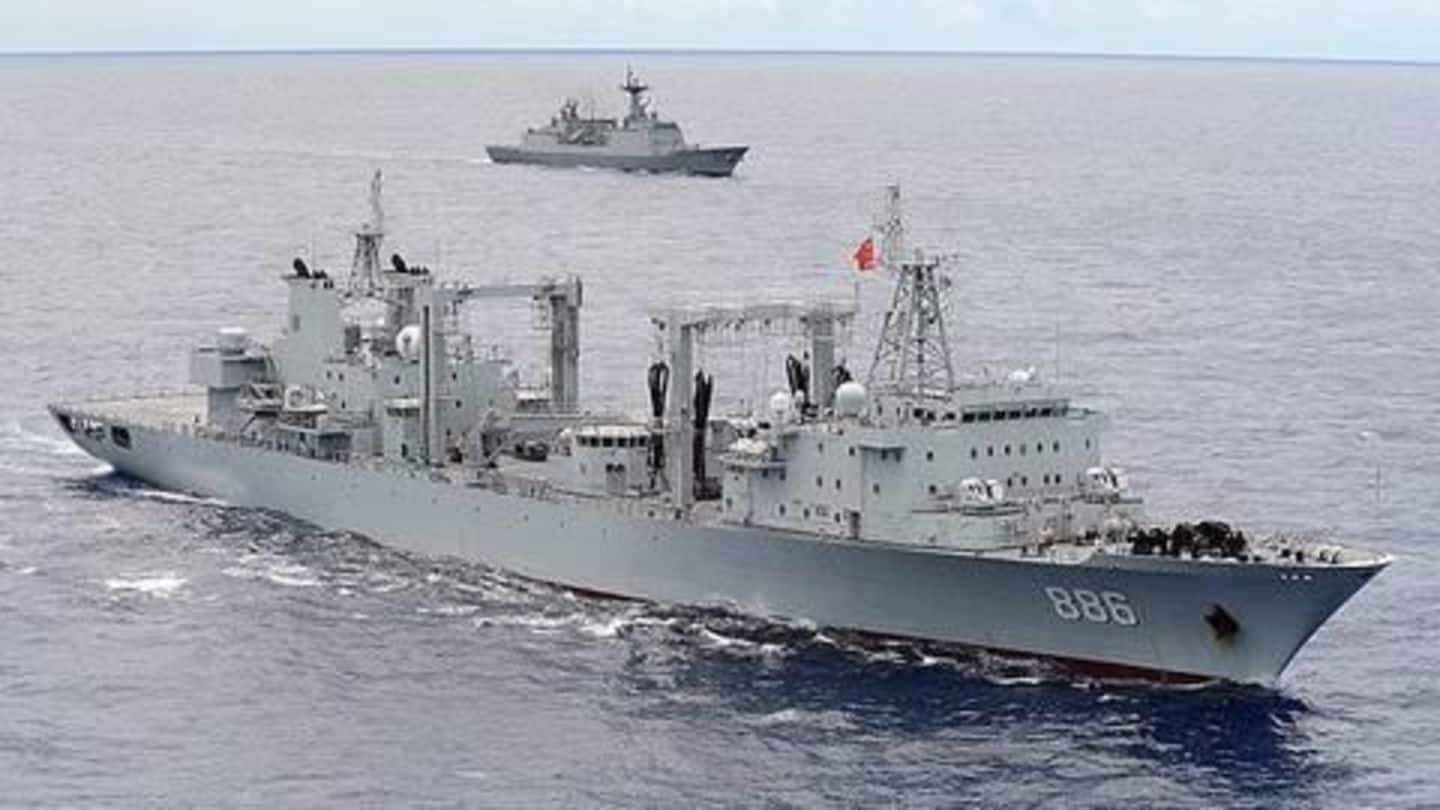
Sikkim stand-off: Chinese Navy increases presence in the Indian Ocean
What's the story
China's People's Liberation Army-Navy (PLAN) has been increasing its deployments in the Indian Ocean, amid the ongoing stand-off between Indian and Chinese troops at the Sikkim border.
PLAN units noticed to have been engaged in unusual activities in the Indian Ocean and more number of ships anchored in Karachi have raised alarm.
Is the Sikkim stand-off extending to a maritime front? Let's see!
Context
What context is this happening in?
The Sikkim stand-off ensued after Indian and Chinese troops clashed at the Doklam region last month. Rising tensions have resulted in massive troop mobilization.
PLAN's increased presence further happens ahead of the Malabar Indo-US joint naval exercises next week.
This has also been set against the backdrop of the G20 summit in Hamburg, where PM Modi is set to meet Chinese President Xi Jinping
Details
What do we know so far?
Intelligence gathered by Indian Navy's satellite Rohini (GSAT 7) and the Poseidon 8I aircraft have pointed to the presence of at least 13 PLAN units in the IOR, including the Luyang-III class guided-missile destroyers.
Indian Navy is exercising high vigil using its surveillance assets and is keeping an eye on Chongmingdao, a PLAN submarine support vessel, currently supporting China's seventh submarine in the IOR.
About
What are China's interests in the IOR?
China looks to grow its influence in the IOR, primarily to secure its trade and energy routes and transform into a global maritime power. China further seeks access to resources in the region.
Concerned about India's global ambitions and fearing Indian Navy would cut off China's energy supplies from the Middle East, China has been driven to strategically encircle India in the IOR.
Do you know?
String of pearls
Chinese encirclement, also known as the "String of Pearls", refers to China's network of ports of economic and military significance in IOR including Gwadar in Pakistan and Hambantota in Sri Lanka. The pearls, geographically located around India are said to be intended to confine India.
Analysis
What now?
Increased presence of naval intelligence and research vessels along with attack vessels are definitely a cause of concern. The increased deployment is likely intended towards closely watching Malabar, 2017 participated in by Japanese, Indian and US navies.
This can also be seen as China's muscle-flexing in the IOR, as well as a harsh indication to India to stand back in Sikkim.